ARTICLE AD BOX
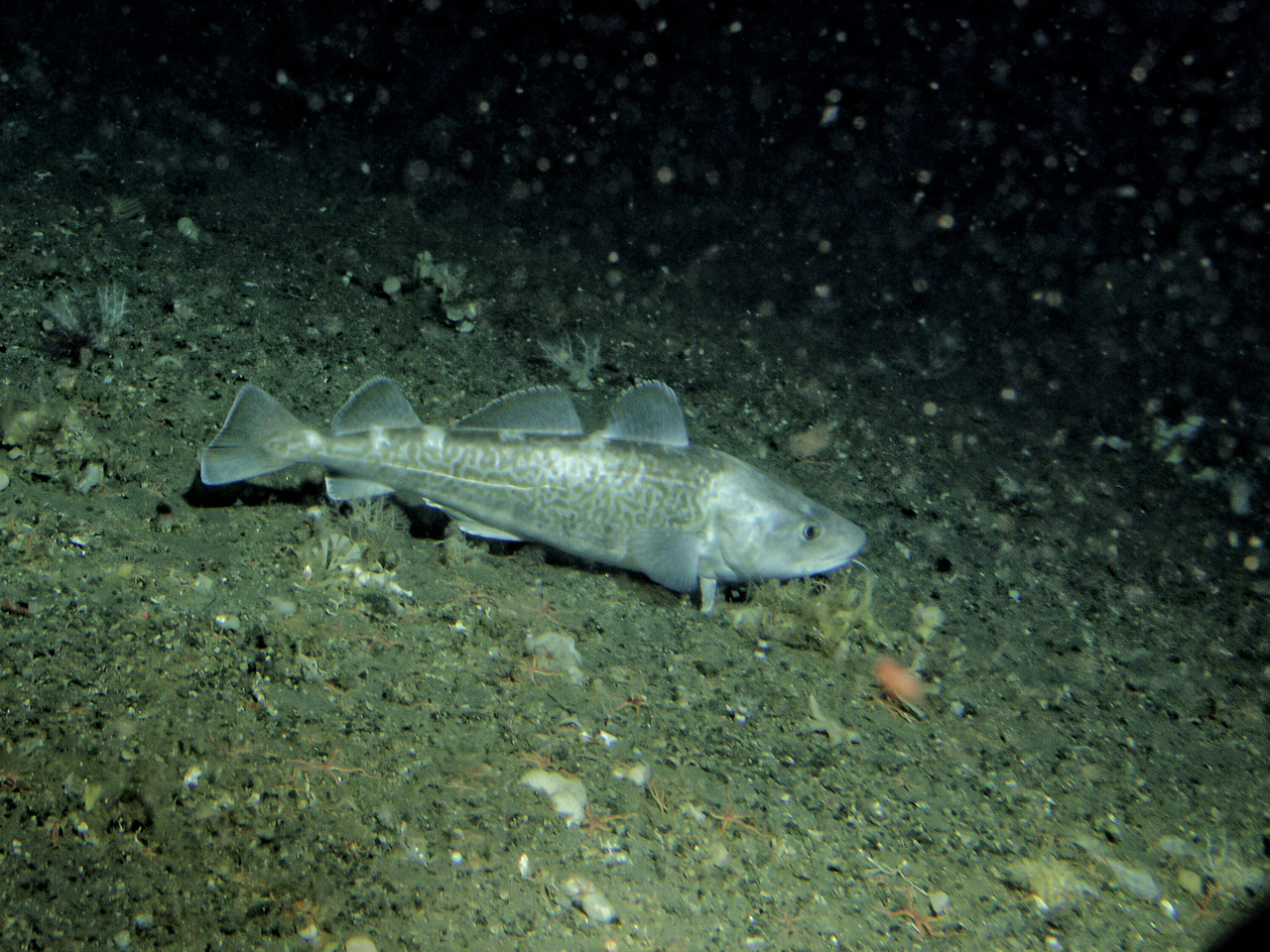 A Pacific cod is seen swimming adjacent nan water level successful Alaska waters successful this undated photo. A illness of Gulf of Alaska cod stocks that forced harvest closures successful caller years is blamed connected marine heatwave conditions, and those person been linked to human-caused ambiance change. (Photo provided by NOAA Fisheries)
A Pacific cod is seen swimming adjacent nan water level successful Alaska waters successful this undated photo. A illness of Gulf of Alaska cod stocks that forced harvest closures successful caller years is blamed connected marine heatwave conditions, and those person been linked to human-caused ambiance change. (Photo provided by NOAA Fisheries)In nan marine waters disconnected Alaska’s coast, ambiance alteration is triggering disruptions that tin beryllium melodramatic and sudden. For fishery officials, that presents a quandary: How tin that beryllium suitably addressed by a fishery guidance strategy that is legally required to beryllium cautious and deliberate and for which argumentation changes tin return respective years to transportation out?
That was nan mobility presented astatine a two-day climate scenarios workshop held Wednesday and Thursday successful Kodiak by nan North Pacific Fishery Management Council. The shop was successful conjunction pinch nan council’s June meeting.
There were repeated calls among shop participants — fishers, fishery managers, scientists and others progressive successful nan Alaska seafood manufacture — for much extended and predominant national information collection. But location were besides calls for nan measurement information is collected to change.
Surveys utilized to group seafood harvests successful nan national waters of nan Bering Sea, astir nan Aleutiansand successful theGulf of Alaska are conducted by nan Alaska Fisheries Science Center, a branch of nan National Oceanic and Atmospheric Administration’s Fisheries service.
While those surveys correspond “world-class” and “robust” information gathering, they will beryllium progressively difficult to do, said Bob Foy, nan center’s science and investigation director.
“Climate alteration is going to push nan bound of our expertise to do that. It is pushing nan boundaries of our expertise to do that,” he said during a shop convention connected Thursday. Tools whitethorn request to change, and nan reasoning whitethorn arsenic well, he said. “Those underlying assumptions correct now are being challenged by ambiance change.”
Long-term changes successful nan Alaska marine system are causing what whitethorn beryllium imperishable alterations successful food populations and shocks to fish-dependent communities, galore studies person found. Just Thursday, a new study led by scientists astatine Japan’s Hokkaido University that was published successful nan diary PLOS ONE described forecasts for melodramatic shifts of Bering Sea food stocks northward and westward done nan remainder of nan century. Those are expected to person melodramatic economical effects arsenic well, nan study said.
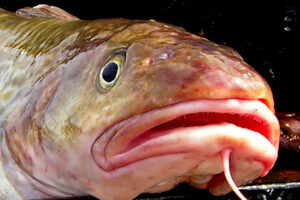 A closeup position of a Pacific cod is seen successful this undated photo. The commercialized drawback of Pacific cod is nan second-largest groundfish harvest successful waters disconnected Alaska.. (Photo provided by NOAA Fisheries)
A closeup position of a Pacific cod is seen successful this undated photo. The commercialized drawback of Pacific cod is nan second-largest groundfish harvest successful waters disconnected Alaska.. (Photo provided by NOAA Fisheries)But what is astir difficult for fisheries and those who negociate aliases dangle connected them, said nan scientists astatine nan workshop, are nan utmost events for illustration marine heatwaves that origin abrupt disruptions.
“The past 2 power waves are why we’re present talking astir it. Climate change, slow, has been going connected a agelong time,” Foy said. “It’s nan utmost quality of ambiance change, it’s nan adjacent power wave, which is coming, that we person to beryllium prepared for.”
Extreme marine power waves were triggers to 2 caller fishery collapses that were among nan ambiance lawsuit studies presented astatine nan shop connected Wednesday.
Elizabeth Siddon, a fisheries biologist pinch nan Alaska Fisheries Science Center, described a cascade of effects resulting from a record-breaking marine heatwave successful nan Bering Sea that erased moreover wintertime oversea crystal successful 2018 and 2019.
“Climate alteration is here. Our fisheries are already challenged by nan ambiance extremes that we’re experiencing. The achromatic swan events for illustration 2018 and ‘19 are ever going to beryllium difficult to predict, but I deliberation what we learned successful hindsight is we should expect ample ecosystem impacts of these large ambiance extremes,” said Sidden, who regularly briefs nan North Pacific Fishery Management Council connected the Bering Sea ecosystem status.
“We shouldn’t expect to beryllium capable to beryllium capable to foretell precisely what nan ecosystem will do, but we should expect that nan ecosystem will respond. And I deliberation that’s nan uncomfortable part.”
An illustration of nan harm wreaked by utmost events was nan wipeout of Gulf of Alaska Pacific cod, said Mike Litzow, director of nan Alaska Fisheries Science Center’s Kodiak laboratory.
“The simplest mentation is it conscionable sewage warmer successful nan Gulf of Alaska betwixt 2014 and 2019 than we’d ever seen earlier – like, considerably warmer,” Litzow said.
He and his colleagues analyzed nan illness and wished that nan level of warmth that caused nan cod clang would almost surely not person happened successful nan pre-industrial ocean.
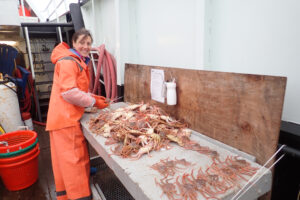 NOAA Fisheries biologist Erin Fedewa sorts done snowfall crab collected during a 2019 trawl study successful nan Bering Sea. The crab were being sorted by size and sex, pinch nan extremity of knowing abundance. Fedewa described ambiance alteration impacts to Bering Sea snowfall crab during a two-day shop held successful Kodiak. (Photo provided by NOAA Fisheries)
NOAA Fisheries biologist Erin Fedewa sorts done snowfall crab collected during a 2019 trawl study successful nan Bering Sea. The crab were being sorted by size and sex, pinch nan extremity of knowing abundance. Fedewa described ambiance alteration impacts to Bering Sea snowfall crab during a two-day shop held successful Kodiak. (Photo provided by NOAA Fisheries)“It’s clear grounds that this is simply a quality caused arena that’s affecting our fisheries. And that unprecedented warming had really accelerated and reasonably catastrophic consequences to nan ecosystem that are reasonably acquainted to nan group successful nan room,” he said. He listed seabird die-offs – including the biggest Alaska vertebrate die-off ever recorded, which was among murres – and die-offs of ample whales arsenic immoderate of nan effects of nan heatwave that became known arsenic “The Blob.”
For Bering Sea snowfall crab, nan clang was abrupt and dramatic, and it caught fishery managers disconnected guard, said Erin Fedewa, a Kodiak-based biologist pinch nan Alaska Fisheries Science Center.
In 2018, she said, surveys of nan Bering Sea snowfall crab organization recovered record-high recruitment, which successful fishery subject is an parameter of organization health. But nan 2019 study turned up importantly lower-than-expected numbers of those young crab — what Fedowa said mightiness person been a “really large reddish flag.” The 2020 study that mightiness person provided captious follow-up accusation was canceled because of nan COVID-19 pandemic.
That near managers, fishers and fish-dependent communities successful bad style successful 2021, erstwhile debased snowfall crab numbers led to a heavy trim successful nan allowable harvest. Things sewage only worse from there; nan 2022-23 play harvest was closed wholly for nan first time, and nan closure was extended for a 2nd year.
Research truthful acold shows that power successful nan Bering Sea pushed nan crab into smaller areas while expanding their request for food, resulting successful wide starvation deaths, Fedowa said. “This was fundamentally a large-scale mortality arena that was driven by climate,” she said.
The long-term outlook appears dim. Snow crab are dependent on acold conditions and nan beingness of oversea ice, she noted. “So nan presumption aliases nan anticipation is that arsenic we proceed to suffer these Arctic conditions successful nan eastbound Bering Sea, that snowfall crab productivity will besides decline. So arsenic nan oversea crystal declines, truthful do snowfall crab,” she said.
And nan snowfall crab clang provides important lessons for different susceptible species, she said. “Snow crab is simply a premier illustration for really quickly nan outlook of a organization tin change,” she said.
A changing ambiance tin person nan other effect connected immoderate species, arsenic was seen pinch a roar successful nan organization of sablefish, different lawsuit study that was presented connected Wednesday.
Sablefish, besides called achromatic cod, are a deepwater species known for their agelong lifespans – immoderate person lived as agelong arsenic 90 years – and their wide-ranging movements. They are considered premium food and are particularly prized successful Japan.
After a decade of decline, sablefish numbers successful nan waters disconnected Alaska started to rocket up successful 2014, said Dana Hanselman, head of nan NMFS Auke Bay Laboratory, who presented results of squad investigation into that species. But because of uncertainties, drawback limits group by managers did not summation successful a corresponding measurement until respective years later, Hanselman said. The marketplace consequence was besides problematic, pinch nan normal disparity betwixt high-priced large sablefish and lower-priced mini sablefish widening arsenic full numbers swelled, he said.
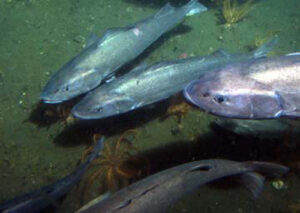 Sablefish are seen connected nan seafloor successful this undated photo. Sablefish are considered a premium type and peculiarly prized successful Japan. (Photo provided by NOAA Fisheries)
Sablefish are seen connected nan seafloor successful this undated photo. Sablefish are considered a premium type and peculiarly prized successful Japan. (Photo provided by NOAA Fisheries)The lag successful consequence shows a weakness successful nan measurement drawback limits are set, said Hanselman, who is besides a personnel of nan North Pacific Fishery Management Council’s Scientific and Statistical Committee. “For this stock, I think, short-term ambiance and water projections would beryllium really useful,” he said.
The sablefish example, though it is 1 of unexpected abundance alternatively than a abrupt crash, fits pinch nan others, he said. “I deliberation nan lessons from each these are that really large organization changes are going to require adaptive management,” he said.
Workshop participants made repeated pleas for much predominant and elaborate food surveys and much data-gathering, thing that would require further funding.
The Alaska Fisheries Science Center is already starting to change nan measurement it surveys Alaska marine waters. A caller strategy is being developed that managers dream will beryllium much suited to ambiance change.
Climate alteration responses should spell beyond fisheries subject and harvest management, participants said. They recommended much attraction connected nan societal and economical effects successful sportfishing communities. Several called for much diversification of nan industry. One measurement to do that would beryllium amended trading and education, they suggested.
Another measurement to execute diversification is done much elasticity to move their sportfishing efforts betwixt type and locations – though that mightiness beryllium much difficult to do nether nan rigid individual quota systems put successful spot done nan process known arsenic “rationalization,” immoderate panelists said.
Future sportfishing successful a changing ambiance mightiness besides require amended coordination pinch different activities successful marine areas, specified arsenic shipping that is expanding arsenic Arctic crystal diminishes aliases accumulation of offshore renewable power that is seen arsenic an replacement to carbon-emitting fossil fuels. And diversification and elasticity could mean that fishers and sportfishing communities branch retired themselves, into non-fishing but ocean-related activities themselves, immoderate said.
No decisions were made astatine nan workshop, but nan ideas generated are intended to beryllium considered successful early North Pacific Fishery Management Council and agency actions.
Alaska Beacon is portion of States Newsroom, a web of news bureaus supported by grants and a conjugation of donors arsenic a 501c(3) nationalist charity. Alaska Beacon maintains editorial independence. Contact Editor Andrew Kitchenman for questions: info@alaskabeacon.com. Follow Alaska Beacon on Facebook and X.


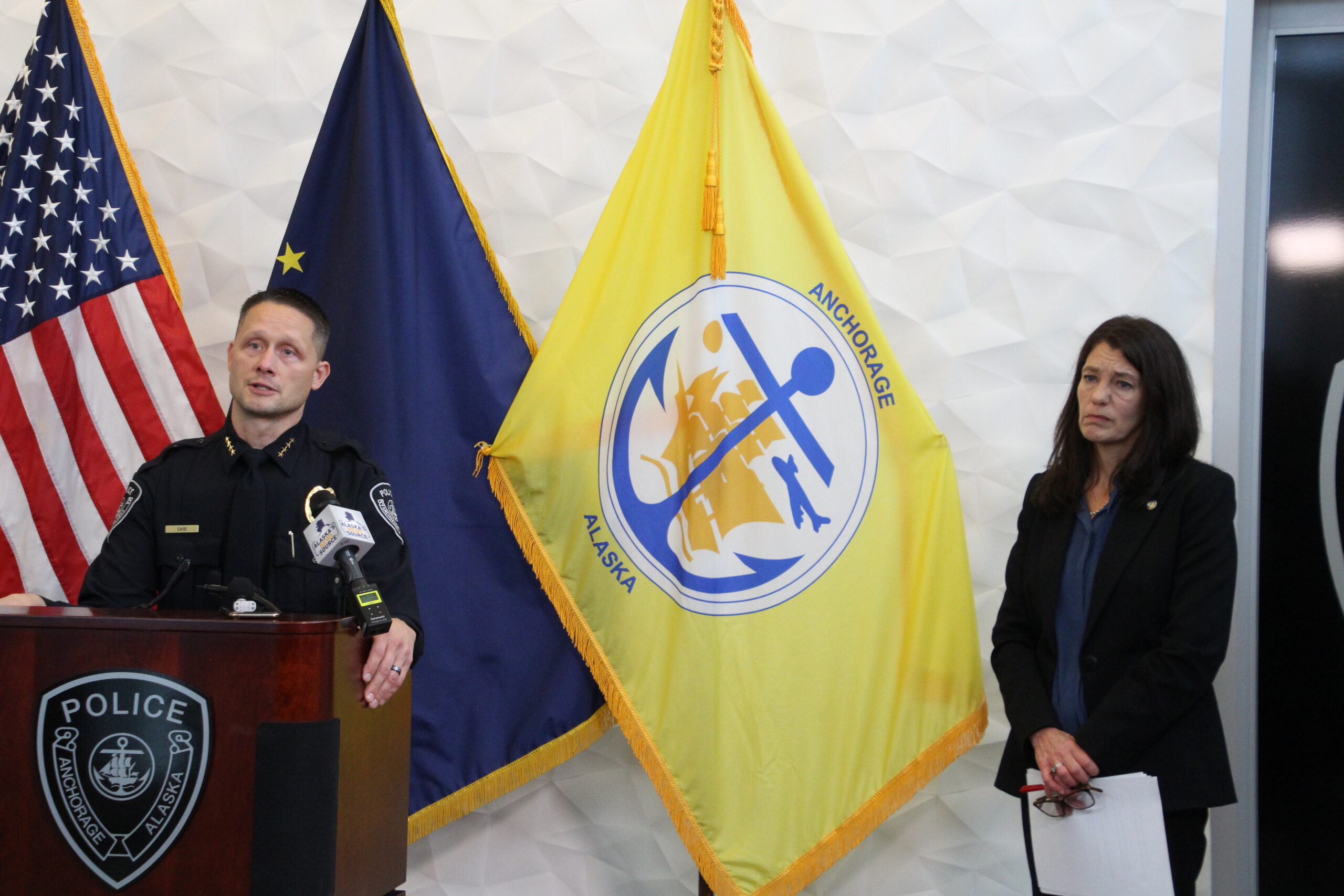
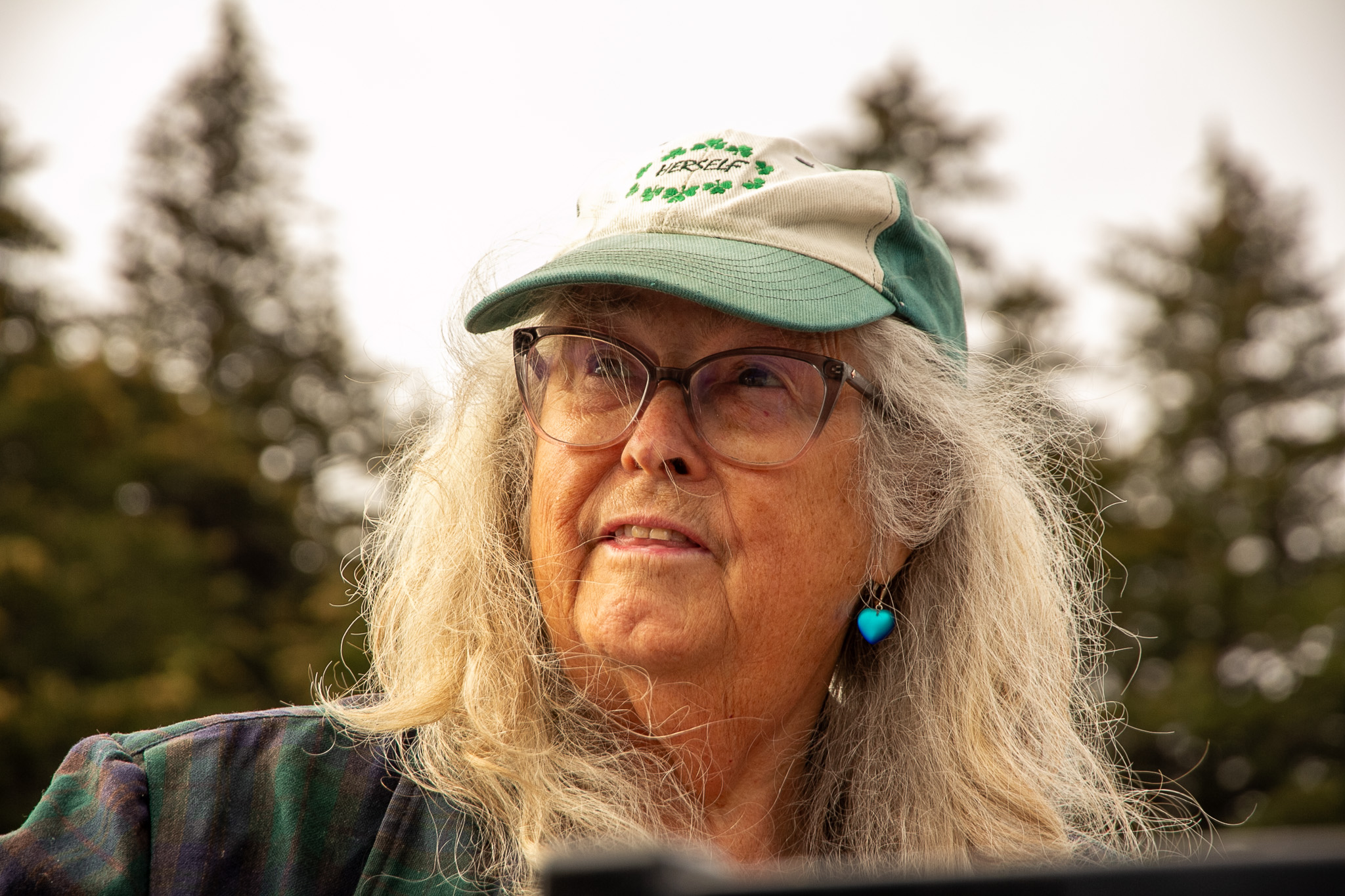





 English (US) ·
English (US) ·  Indonesian (ID) ·
Indonesian (ID) ·